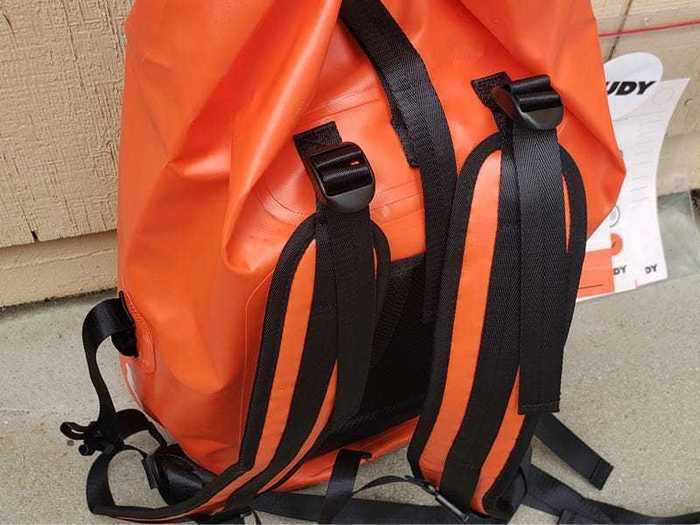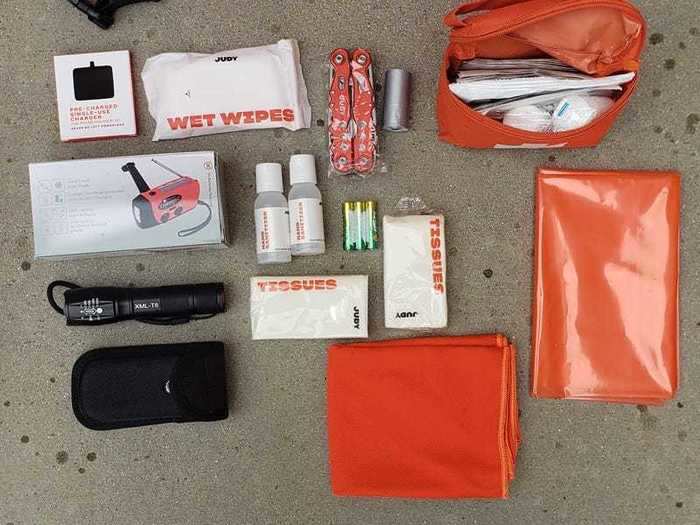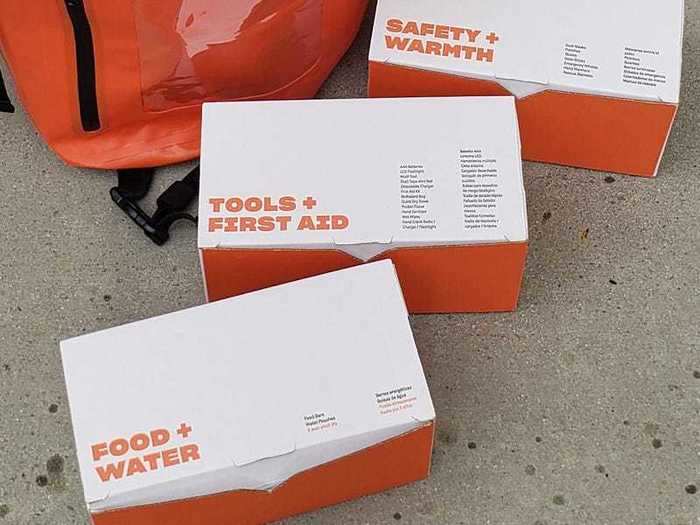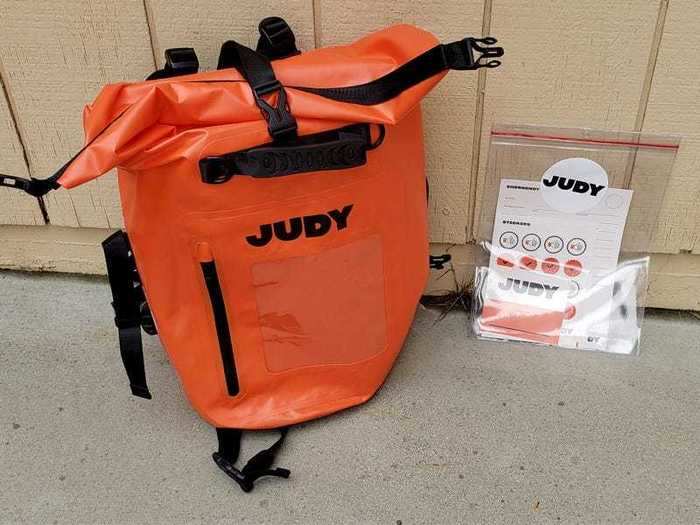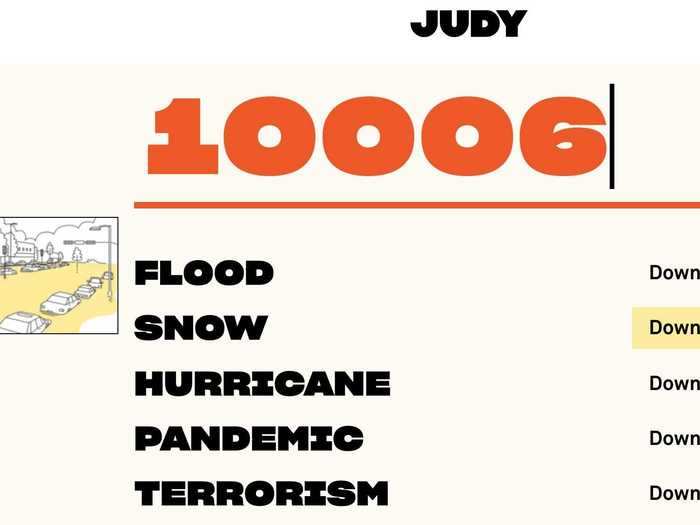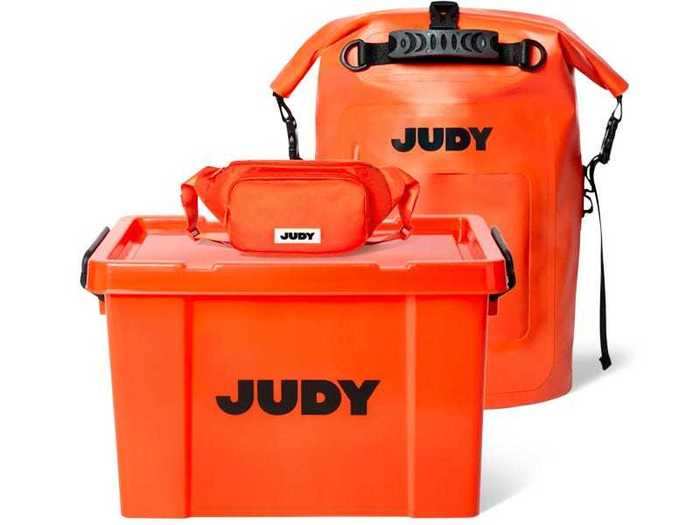While no ready-made emergency preparedness kit is perfect, experts say Judy's is a good starting point
Connie Chen
When you buy through our links, we may earn money from our affiliate partners. Learn more.
- Disasters can happen at any time, in any place. Ideally, you should make your own emergency kit to suit your family's particular needs, but it can be expensive and time-consuming to gather individual items.
- Ready-made emergency preparedness kits may not be a one-stop solution, but they're a good place to start.
- Judy is a new online brand offering four different emergency kits along with other disaster preparedness resources to help you become more confident in case catastrophe strikes.
- The Mover Max ($180) has enough supplies for four people and comes in a rugged, bright orange backpack that's easy and comfortable to carry. That being said, the emergency preparedness experts we spoke to don't think it's perfect — it lacks some important items and isn't suitable for larger households.
- See our guide to the items everyone should have in their emergency kit.
No matter where you live in the world, disasters can strike suddenly. The last thing you want is to be caught unprepared for any struggles ahead, whether they involve physical safety, access to food and water, or communication.
Recent disasters like the coronavirus pandemic and the bushfires in Australia remind us that creating an emergency plan for you and your family is essential. And one step you should take in putting together that plan is making an emergency kit.
Jeff Schlegelmilch, the deputy director of the National Center for Disaster Preparedness at Columbia University's Earth Institute, says, "The idea of having emergency kits is to help save time and to ensure you have what you would need in a scenario where you have to go quickly or stay put for a while."
Should you buy a ready-made kit or make your own?According to Ready.gov, the disaster preparedness public service campaign created by the Federal Emergency Management Agency (FEMA) in 2003, there are 15 basic items you should stash in your emergency kit, including local maps, a battery-powered or hand-crank radio, and a first aid kit. Many ready-made emergency bundles available at Amazon, Costco, and outdoor retailers contain the essentials on Ready.gov's list. However, experts say that you shouldn't rely entirely on those 15 staples — disaster preparedness is not a one-and-done deal.
"Generally these can be a good starter kit for getting your emergency supplies together," says Schlegelmilch. "But consumers still have a responsibility to make it their own and to fill in the things that are not contained in the kit. This is especially true for people with medical conditions, dietary restrictions, etc." Some personal items that shouldn't be overlooked: prescription medications, glasses and contact lens solution, and pet supplies.
Thomas Coyne is a former helitack firefighter and the founder of Coyne Survival Schools, which has trained members of the US Marine Corps, Navy, Air Force, and Department of Defense. He says, "I have nothing against getting a starter kit, and it is most likely better than nothing, but I still recommend building your own." It's worth mentioning that he suggests having at least 30 days' worth of supplies.
Coyne also says to prepare three different types of emergency kits: a "get home bag" for your vehicle, a disaster kit for your home, and a bugout bag (one per person) for emergency evacuation. Outdoor backpacks, which are lightweight and compact but can still stand up to rugged conditions, make the best bugout bags. You'll want to prepare supplies like micro-stoves and compressible folding sleeping bags, sleeping mats, and water bottles.
Which often-overlooked emergency supplies you should consider?When I gave Coyne a few different popular ready-made emergency kits to evaluate, he noted that they all include flashlights, but headlamps are ultimately superior. He says, "It's far easier to work with a headlamp, which is why everyone from hikers to soldiers to first responders use them for working at night. It's hands-free, and wherever you look is illuminated."
He says you should also have some method of purifying water, and make sure to invest in a high-quality multi-tool. If a multi-tool is the only tool you have on hand to get you through various tasks, it can't be made from cheap materials.
Schlegelmilch highlights something you may not have thought about: "Comfort items, especially for kids, are really important."
"In any disaster event, you need to start with what is immediately important for life safety, of course. But after the disaster sets in, you have people of all ages in a state of uncertainty and period of waiting. Having games, toys, books, or even a deck of cards to help pass the time and create some semblance of normalcy can be really important."
Coyne also called out this kit for including a deck of cards.
What about this new direct-to-consumer kit, Judy? How does it compare to other ready-made kits?Judy has been called the "Kardashian-approved survival kit for the anti-prepper" — its Kardashian-adjacent CEO Simon Huck is the owner of Command Entertainment Group — and the company offers different types of emergency kits, in addition to disaster preparedness resources.
If Judy looks familiar, it's probably because you've seen one of their ubiquitous Instagram ads. The buzzy brand's online-first approach certainly stands out in the disaster preparedness space, and the bags' streamlined designs also set Judy apart from its competitors.
Like we've said, no ready-made kit is perfect, but as our experts above have emphasized, buying a bundle of supplies is a great place to start. We reviewed Judy to determine whether its kits are worth purchasing, or if you're better off making your own.
Here's what to expect when you go on Judy's website and order its emergency kits. Read the original article on Business InsiderREAD MORE ARTICLES ON
Popular Right Now
Popular Keywords
Advertisement

